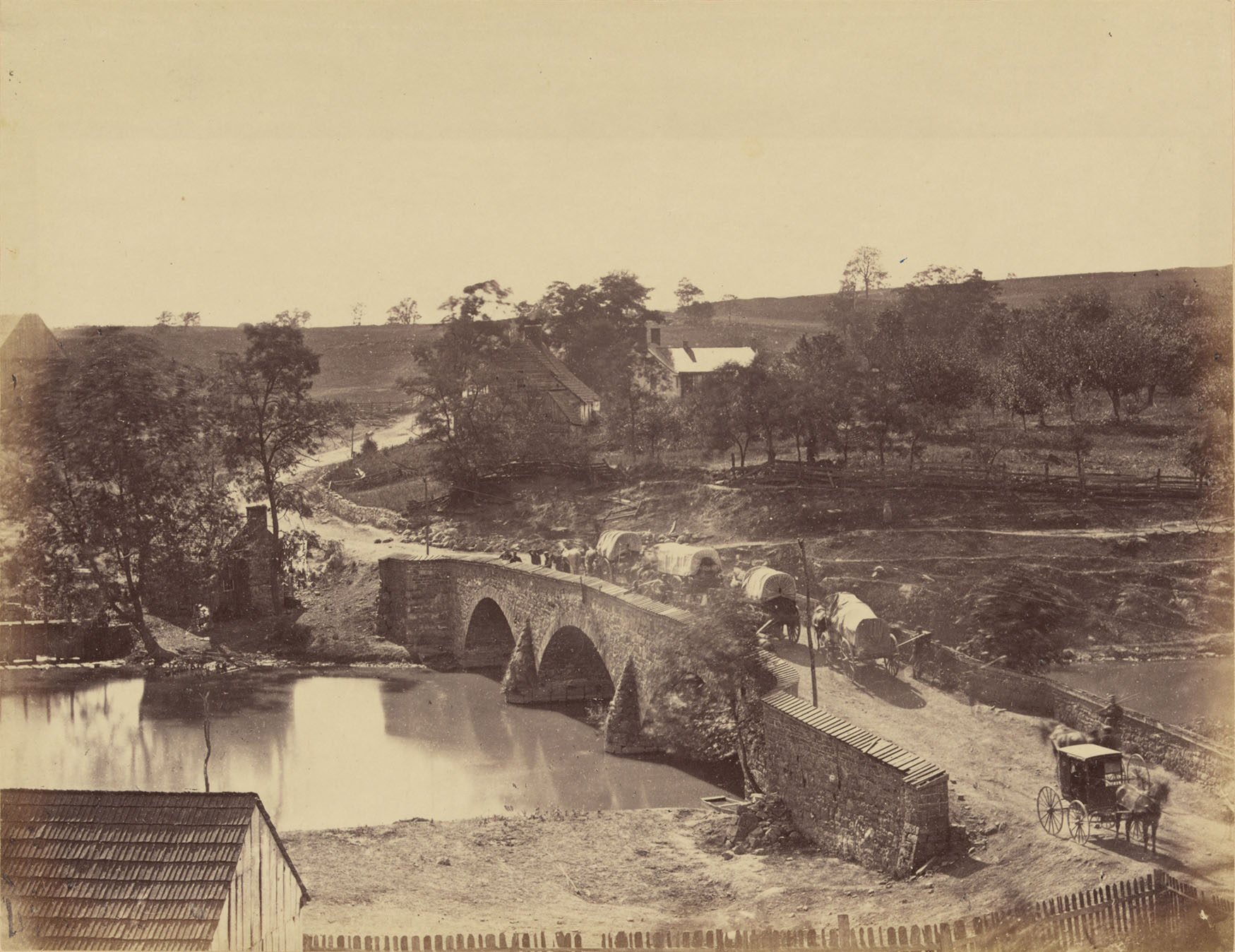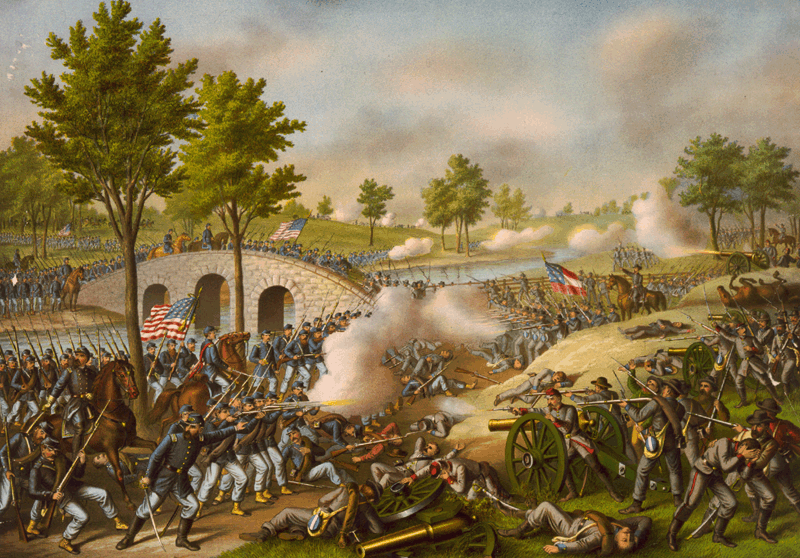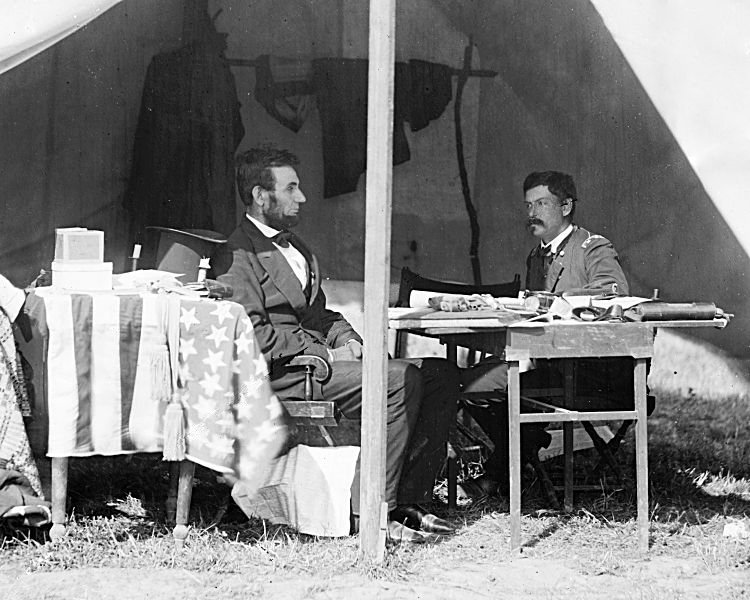The Battle of Antietam
On September 16, Major General George B. McClellan confronted Lee's Army of Northern Virginia at Sharpburg, Maryland. At dawn on the 17th, Hooker's corps mounted a powerful assault on Lee's left flank that began the single bloodiest day in American military history. Attacks and counterattacks swept across Miller's cornfield and fighting swirled around the Dunker Church. Union assaults against the Sunken Road eventually pierced the Confederate center, but the Federal advantage was not followed up. Late in the day, Burnside's corp finally got into action crossing the stone bridge over Antietam Creek and rolling up the Confederate right. At a crucial moment, A.P. Hill's division arrived from Harpers Ferry and counterattacked driving back Burnside and saving the day. Although outnumbered two to one Lee committed his entire force while McClellan sent in less than three quarters of his army enabling Lee to fight the Federals to a standstill.
During the night, both armies consolidated their lines. In spite of crippling casualties Lee continued to skirmish with McClellan throught the 18th while removing his wounded south of the river. McClellan did not renew the assaults. After dark Lee ordered the battered Army of Northern Virginia to withdraw across the Potomac River into the Shenandoah Valley of Virginia. The battle was not conclusively won by either side although the Union had a strategic victory.
In naming the carrier and cruiser ANTIETAM, the U. S. Navy commemorates a site along Antietam Creek, near Sharpsburg, Maryland at which a major Civil War battle was fought. The Navy has named three American warships in remembrance of this battle.
After his great victory at Manassas Va. in August 1862 Lee marched his Army of Northern Virginia into western Maryland hoping to find vitally needed men and supplies. McClellan moved his Union army westward to cut off Lee and protect Washington and Baltimore from being separated. McClellan followed Lee, first to Frederick, where through rare good fortune a copy of Lee's battle plan fell into his hands, and then westward twelve miles to the passes of South Mountain. There Lee tried to block the Union troops. Over the next two days new battle lines were drawn west and east of Antietam Creek.





